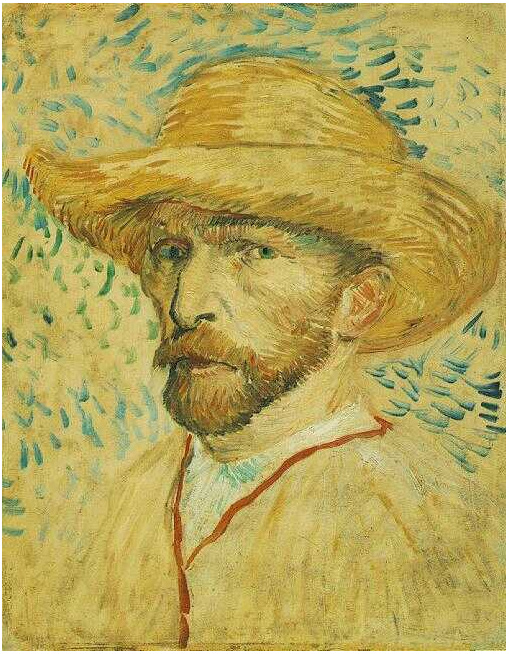Van Gogh, the painter

Have you seen the brand in the shop, but not sure it is suitable for your work? Curious how can Maths and Vincent Van Gogh be in the same sentence, or intrigued how much has he actually cut off of his ear? Come along and admire the “tortured genius’s” works!
Vincent Willem van Gogh
Interesting Facts About Van Gogh
- Van Gogh worked as an art dealer, and was fairly successful.
Since he couldn’t really bear to do his art dealer job, he became a preacher south of Belgium. - Van Gogh was dismissed because of his exaggerated religiousness, and moved back to his parents’ home and began learning to draw. Mostly in his lifetime he was too poor to afford models, therefore he practised by painting self portraits.
- Later in his life Van Gogh started attending the Academy of Fine Arts in Antwerp. However, as the academic environment didn’t appeal to him, he went to Paris after a year.
- Van Gogh spent some time with his friend Paul Gauguin working in a shared studio. However, as he suffered from numerous mental and physical illnesses, during one of his epileptic seizures he tried to attack Gauguin with a razor, which resulted in him cutting off his earlobe.
- In his lifetime Van Gogh’s family tried to convince him to go to a mental asylum, and after his deteriorating mental health caused the incident, he willingly committed himself into an institution in Saint-Remy
- After a while Van Gogh was well enough to return to the outside world, but his depression got considerably worse when his brother, Theo, could no longer afford to finance him.
- It was believed for long that Van Gogh committed suicide by shooting himself in a field, however, a recent study claims that in fact his death could have been the result of his encounter with two drunk boys who had a malfunctioning gun.
- What is certain that Van Gogh died two days after being shot, and according to his brother, his last words were: “the sadness will last forever”.
- Theo died six months after his brother, and it was his wife who pursued galleries and art dealers to get Vincent Van Gogh’s paintings recognised. It turned out successful, as while van Gogh only sold one painting in his lifetime, he became famous after this death.
Painting Techniques / Style:
The later, most well-known style of Van Gogh is supposed to be that of Post- Impressionist. Post/Impressionism wasn’t really a movement like impressionism, it was more of a response to the strict rules of the style. Painters who identified as ‘Post-Impressionists’, put more emphasis on the spiritual, symbolic and emotional expression, thus creating completely unique works determined by each individual painter’s persona.
Wheatfield with Crows (1890)
Pointillism
Pointillism is a painting style most characteristic of Georges Seurat – but Van Gogh made attempts to recreate it in his own way as well. Pointillist paintings are made up of (tiny) dots of paint out of the tube and placed next to each other – this way eventually the dots seem to blend together and give out the forms and colours.
Impasto
This technique creates a somewhat 3D effect as the paint is applied heavily on the surface.
Van Gogh’s colour palette
You can find more about it in the previous article by clicking here
“How to paint like van Gogh?”
https://www.youtube.com/watch?v=gDEMxd6EDDA
https://www.youtube.com/watch?v=86RsoSdIN4w
Still want more?
Documentaries:
The unexpected math behind Van Gogh’s “Starry Night” – Natalya St. Clair
Studies:
A comparative study of Vincent van Gogh’s Bedroom series
References:
http://www.vangoghgallery.com/misc/fun_facts.html
Vincent van Gogh – 30 Interesting Facts About His Life and Art
http://www.artyfactory.com/art_appreciation/portraits/van_gogh.htm
http://www.theartstory.org/artist-van-gogh-vincent.htm
http://www.bbc.co.uk/news/entertainment-arts-15328583







